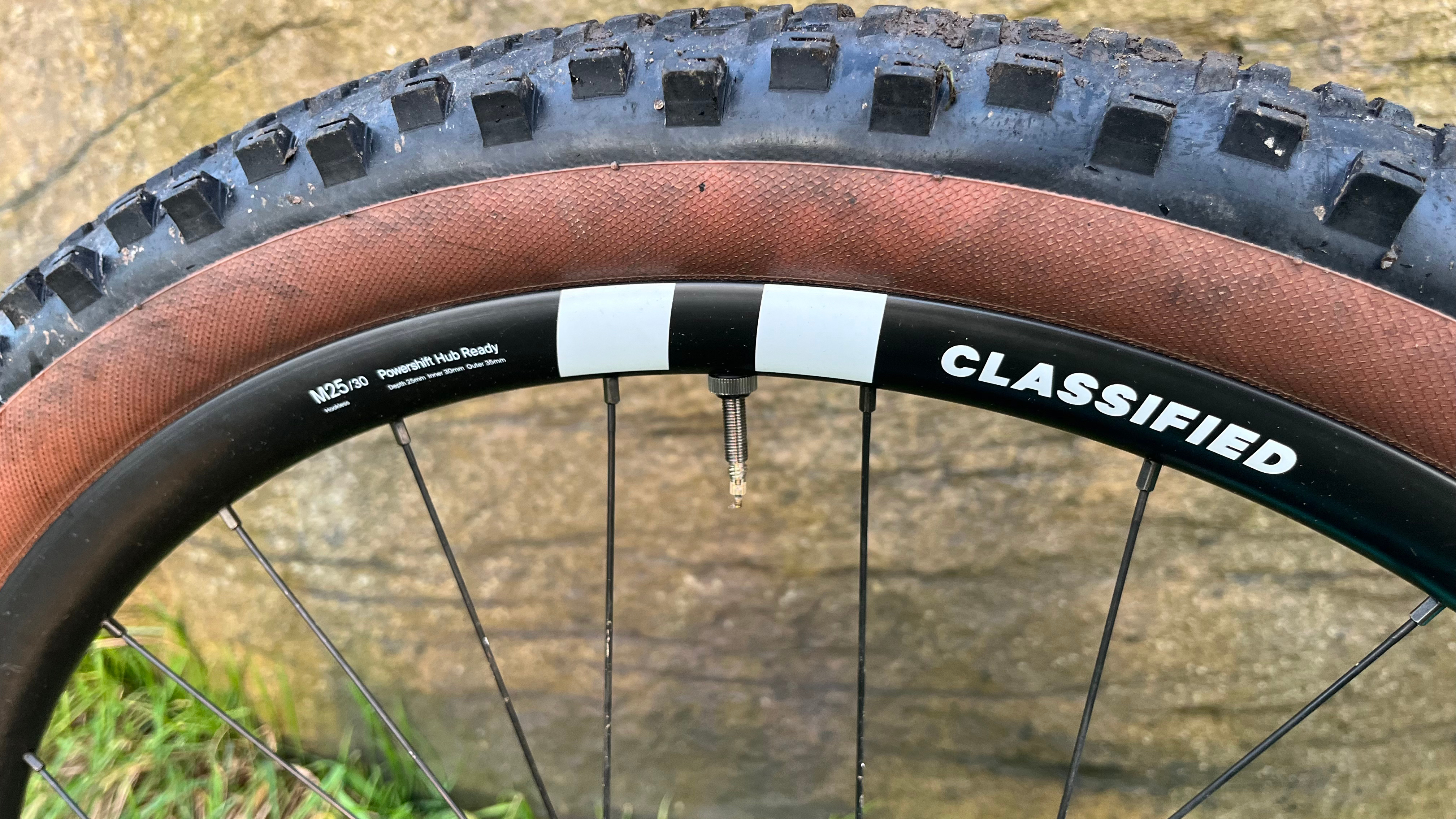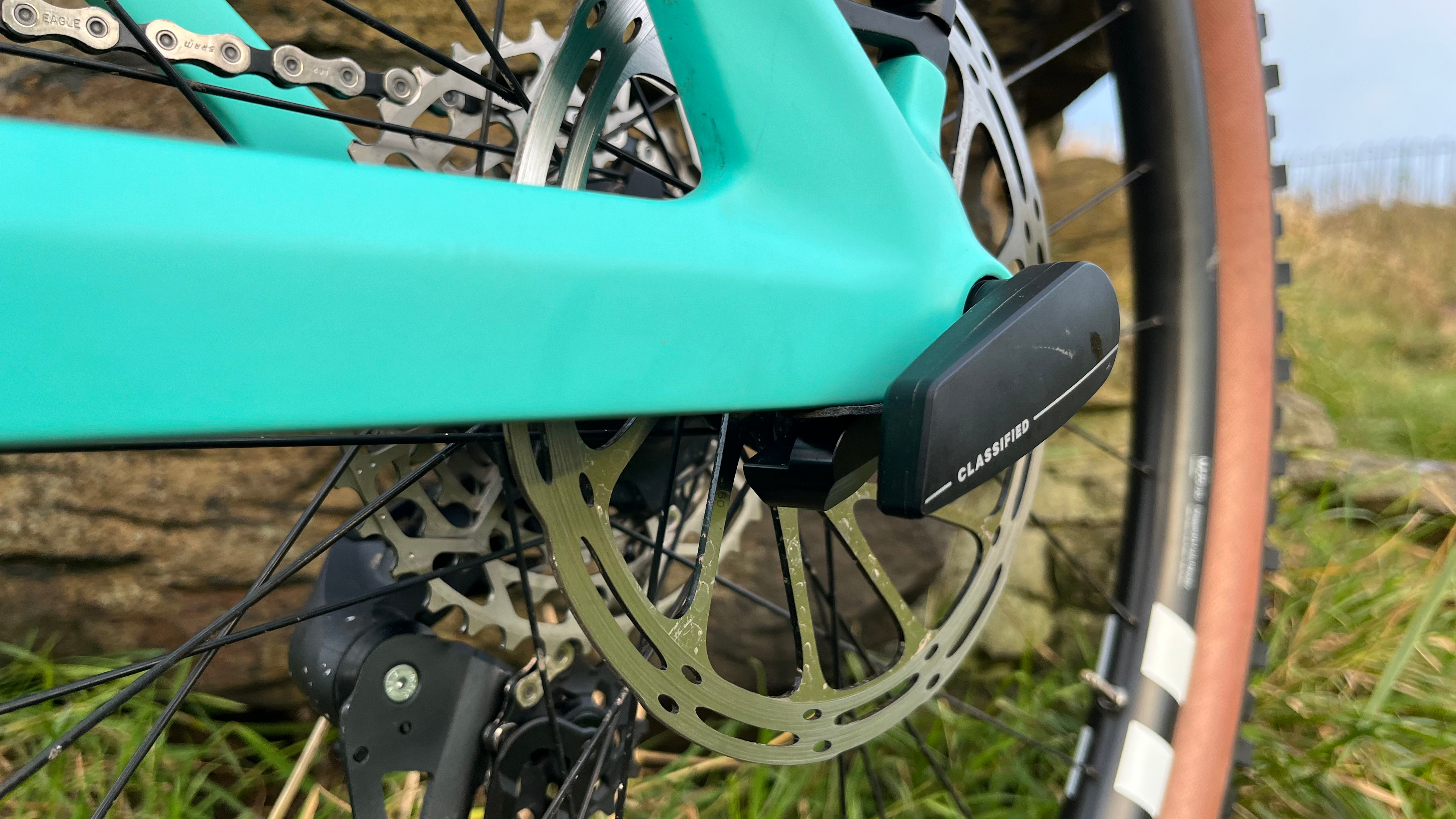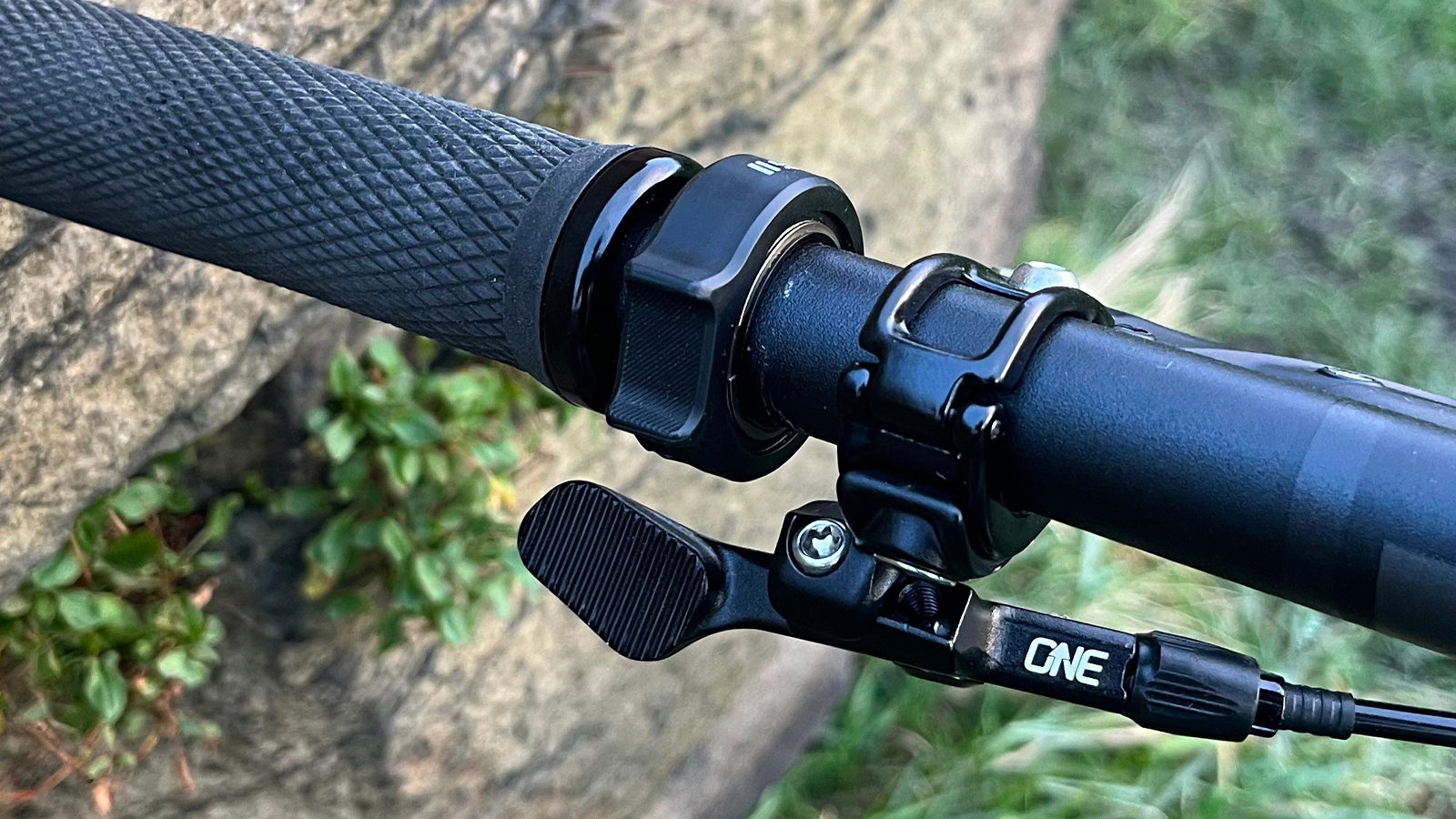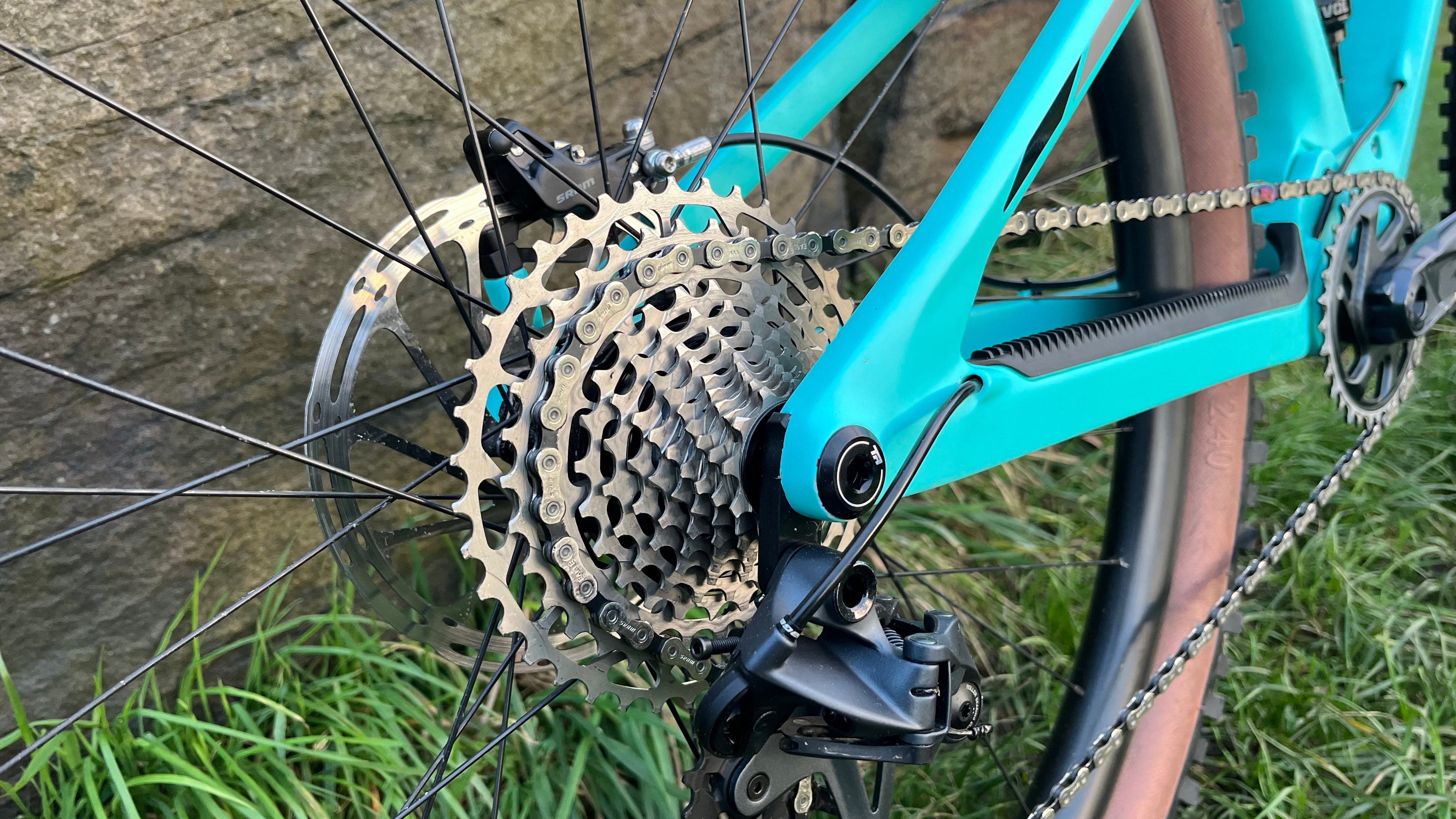Bike Perfect Verdict
Technically incredible with lightning-quick shifts and very well engineered, but the huge cost and limited advantages over current setups limit the appeal unless you're someone who really misses 2x shifting.
Pros
- +
Unbelievably quick shifting
- +
Very slick shifter
- +
Closer spread of gear ratios a benefit on longer steady gradients
- +
Hub gear shifts perfectly, even under high loads
- +
The system integrates very cleanly on any MTB
Cons
- -
High cost
- -
Marginal benefits compared to regular 1x12
- -
Charging a little awkward
- -
Limited wheel options
Why trust BikePerfect
We first featured the Classified Powershift MTB 2-speed hub in April when our own Guy Kesteven saw the system at the Bike Connection event, but I recently had the chance to put it to the test on my local trails. The system has been around for a while now on the road and gravel scene, it even appeared at this year's Tour de France and multiple world tour road races, which is quite an achievement in the steadfastly traditional skinny tire world. Classified has won many fans in the drop bar world, getting 4.5 stars in our Classified Powershift gravel review, but this is the first dedicated MTB version. I was very excited to get this on test, so how did it perform in a sometimes frozen, often wet, and muddy UK?

Design and specifications
If you are unfamiliar with the setup, Classified’s gear system is based around a two-speed rear hub with an internal planetary gear system that takes a claimed 150 milliseconds to shift from the standard 1:1 drive to a 0.7 reducer ratio. Depending on the cassette, that’s equivalent to two or three rear derailleur shifts, but at a speed and accuracy that's unmatched by any derailleur system.
It comprises a wireless shifter, a receiver built into a thru-axle, and a bespoke rear hub that houses the planetary gears and uses their proprietary cassette design. The shifter is based on a design from the niche Swiss brand Zirbel, a firm favorite of Scott rider Dangerholm on his high-end builds. It is similar to the ring controller in terms of function thats found on the latest Fazua Ride 60 e-MTB setup. It is a small, neat, rechargeable unit that mounts next to your grip and uses an up or down motion to send a signal via Bluetooth to the receiver pod at the bike's rear.
Planetary gear systems have existed for years, from the original Sturmey Archer three-speed to the latest 14-geared Rohloff hubs. They all work on a similar setup of having the gears contained within the hub but also share many drawbacks, such as extra mechanical drag that can be felt through the pedals, poor shifting under load, and high weights. Still, the Classified design doesn't appear to continue that trend, with super fast shifts working on loads up to 1,000 watts and only causing an extra 0.2 percent drag in its 0.7 reducer gear.

The receiver is built into a bolt-through-axle setup and features a USB charging point hidden underneath a battery cover. There are three lengths available and six different threads, so there should be an option for all frames. This slots into their bespoke large-bodied hub, which uses Classified's own freehub standard. I had the 12-speed variant on test, which uses an 11-40 tooth cassette and, when combined with the hub, gives you a gear range of 530 percent, which is ten percent more than SRAM’s Eagle setups and 20 percent more than Shimano’s 12-speed offering. This is spread across 16 distinct gears. I say 16, as with all 2x systems, there will be a crossover of certain gears. For example, if you had a double chainset with 36 and 22 chainrings, 32/16 would be the same gear ratio as 22/11.
This does lead to closer gaps between gears, giving a 10 percent gap between ratios, unlike the 16 or more you would find on a normal 12-speed drivetrain. Closer gear ratios are a big advantage on a road or gravel bike, where the power and output tend to be more steady. Still, it is less beneficial on technical terrain where quickly moving to a much higher or lower gear is often more advantageous on quickly changing gradients.
Now, let's get the first big stumbling block out of the way, price. It is clear that there has been a lot of development and it is unlike anything out there, but the high cost compared to a 2x or any other system frankly is hard to avoid. I hate “how much” comments in general on top-end products, as they often present the pinnacle of design, and new tech has always been expensive whatever hobby you are into, but £2,559 / €,2699 (for complete wheels and gearing) for only 20 percent gain in gear ratios and closer gears is a big ask. Of course, only you can decide if you can justify the cost, but it is a high price, however, you look at it.
There are three options available currently. The option I had on test is the easiest way to get the system, comprising a set of wheels with the proprietary hub and all shifters, receivers, and cassette included for $3,000 / £2,559 / €2,699. You can purchase just the hub shell and kit, which comes in at $1,688 / £1,485 / €1,549, but you need to factor in at least a rim, spokes, and the cost of the wheel build. Hubs are currently only available in a 28-hole straight pull variety, but a 32-hole with a standard J-bend spoke will be available in the future, according to Classified. The third option is simpler and slightly less costly, the Plug-in kit. This gives you the hub internals and running kit to plug into any of Classified's partner wheel brands. This retails for less, $TBC / £1,385/ €1,449, but you have to factor in the cost of wheels too. For example, the Hunt Proven carbon race XC wheelset retails at $1,150 / £999 / €1,200
Classified has partnered with several brands to offer wheels compatible with the system. These include DT Swiss, Hunt, Enve, and Reynolds and their offerings. I had the latter, the catchily named M25/30 XC Carbon wheelset. As the title suggests, they have a 25mm deep section with a 35mm wide hookless carbon rim with a 30mm internal width. They are a lightweight XC wheelset at 1,365g (not including the Powershift rear hub).

Performance
I was lucky enough to test the system on a quite frankly brilliant Transition Spur. The bike came with Powershift installed, so I can't comment on how easy it is to assemble, although I doubt it would cause many issues as the wheels are a standard fit, and the shifter is, of course, wireless.
The shifter was straightforward to use and easily charged using the supplied cable. However, the receiver on the rear axle was less so as the USB port is hidden on the inside underneath a small battery cover. Classified claim the system should only need charging every three to six months, but there was a fault on my test version, which meant the battery needed charging before every ride and was a bit of a pain – in keeping with Rich Owen's recent article, is the latest electronic tech ruining MTB?
The shift is so quick and quiet that when it's in a bike stand, it's actually quite hard to tell if it's changed, and it's a similar story out on the trail. It's unbelievably quick, quiet and efficient. As a technical product, it is fantastic and shifts like nothing else out there in a very neat package. Unlike other two-speed systems I've used, the system has no perceivable drag, like SRAM's short-lived Hammerschmidt cranks.
The ring drive shifter is fantastic, and it's a very neat design that fits well with dropper levers and brakes and is easy to operate quickly with a flick of the thumb. This version worked perfectly, with no bagginess or sticking when wet or muddy, that plagues some of the Fazua units.
The cassette is well made, but doesn't shift quite as crisply as established brands, but is more than adequate. I've ridden many road bikes over the years, and while a close-ratio cassette is a real bonus for skinny wheels, I found it a lot less useful on a trail or downcountry MTB. I could potentially see the benefit if you ride on long alpine climbs or on Trans-alp type events, where micro-changes in gearing on long climbs can save precious watts, or on an extreme gravel build where a smaller jump between gears would help you manage the right cadence on long sections. Still, it wasn't a game-changer for me.
I didn't have the system to test for long enough to give an accurate opinion on longevity, and battery charge issues aside, everything worked as it should, from the wheels to the neat ring drive shifter. I have used the system on a road bike in the past and had no such charging problems (nor have other testers we've spoken to), and after speaking to the distributor, it may just be a rogue issue on my test kit.

Verdict
The Classified Powershift is a fantastic system, but one that's better used in other bike applications than MTB. It works perfectly, but I feel the limitations in wheel choice and marginal gains in gearing range aren't enough to justify its very high cost.
The system definitely has a place, but that's somewhat of a niche within a niche outside the established gearing options already out there. For most MTB riders, the ability to have a wider choice of gears within a very similar range to conventional systems isn't really a big deal, but if they are and you have deep pockets, the Classified Powershift system could be just what you are looking for.
Tech specs: Classified Powershift MTB
- Price: (complete system including wheels) $3,000 / £2,559 / €2,699
- Number of gears: 24 (2x12)
- Gear range: 530 percent
- Cassette cogs: 11, 12, 13, 14, 15, 17, 19, 22, 25, 29, 34, 40t
- Cassette weight: 248g
- Ringshifter weight: 24g
- Wheel weight: (on Classified carbon wheels) 1,365g
- Total sytem weight: 1,637g

Neal has been riding bikes of all persuasions for over 20 years and has had a go at racing most of them to a pretty average level across the board. From town center criteriums to the Megavalanche and pretty much everything in between. Neal has worked in the bicycle industry his entire working life, from starting out as a Saturday lad at the local bike shop to working for global brands in a variety of roles; he has built an in-depth knowledge and love of all things tech. Based in Sheffield, UK, he can be found riding the incredible local trails on a wide variety of bikes whenever he can

